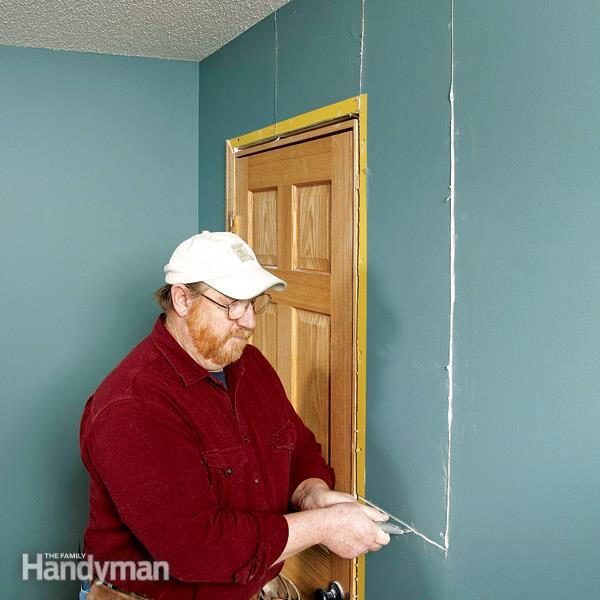Cracks in doors can be both an eyesore and a structural problem, but with the right approach, you can repair them effectively, restoring your door to pristine condition. This comprehensive guide will arm you with the knowledge and step-by-step instructions to expertly fix cracks in doors, ensuring a durable and aesthetically pleasing result.

Image: www.familyhandyman.com
Understanding Cracks in Doors: Causes and Types
Before diving into the repair process, it’s essential to understand the different causes and types of cracks that can occur in doors. These include:
-
Shrinkage: As wood ages, it naturally shrinks, which can lead to the development of small cracks.
-
Structural Stress: Excessive weight or force applied to the door can cause it to crack.
-
Environmental Factors: Extreme temperature fluctuations and moisture can weaken the door’s structure, contributing to cracks.
-
Wear and Tear: Over time, repeated use and daily wear and tear can lead to the formation of cracks.
Depending on the severity of the crack, it can be classified as:
-
Hairline Cracks: Thin, shallow cracks that do not significantly compromise the door’s integrity.
-
Minor Cracks: Cracks that are less than ⅛ inch wide and do not penetrate the entire thickness of the door.
-
Major Cracks: Cracks that are wider than ⅛ inch, penetrate the door’s thickness, and may compromise its structural stability.
Step-by-Step Guide to Repairing Door Cracks
Now that you understand the different types of cracks, let’s delve into the detailed steps involved in repairing them:
1. Gather the Necessary Tools and Materials
For this repair project, you’ll need the following tools and materials:

Image: www.youtube.com
2. Prepare the Area
Clean the surface around the crack with a damp cloth. Use fine-grit sandpaper to gently sand the edges of the crack, removing any splinters or loose wood. This will create a smooth surface for the wood filler to adhere to.
3. Apply Wood Filler or Epoxy
For hairline cracks, wood filler is a suitable solution. For minor and major cracks, epoxy is recommended for its increased strength and durability. Use a putty knife or small spatula to apply the selected material into the crack, ensuring it is completely filled.
4. Sand and Finish
Allow the wood filler or epoxy to cure according to the manufacturer’s instructions. Once cured, use medium-grit sandpaper to smooth out the filled area, blending it with the surrounding wood. Wipe the area clean with a rag or cloth to remove any excess dust.
Optional: If desired, apply wood stain to match the color of the door. Allow the stain to dry completely before applying a clear finish, such as varnish or polyurethane, to protect the repaired area.
Special Considerations for Major Cracks
For major cracks, additional steps may be required to ensure structural stability:
How To Fix Crack In Door
Conclusion
By following the steps outlined in this comprehensive guide, you can effectively repair cracks in doors, restoring them to their original condition. Whether you encounter hairline, minor, or major cracks, the techniques and tips provided will equip you with the knowledge and confidence to tackle this task like a seasoned professional. Remember, while DIY repairs can save you money, it’s crucial to seek the assistance of a qualified carpenter if the crack is extensive or poses a structural risk. With a little bit of effort and attention to detail, you can breathe new life into your doors and maintain the beauty and functionality of your home.